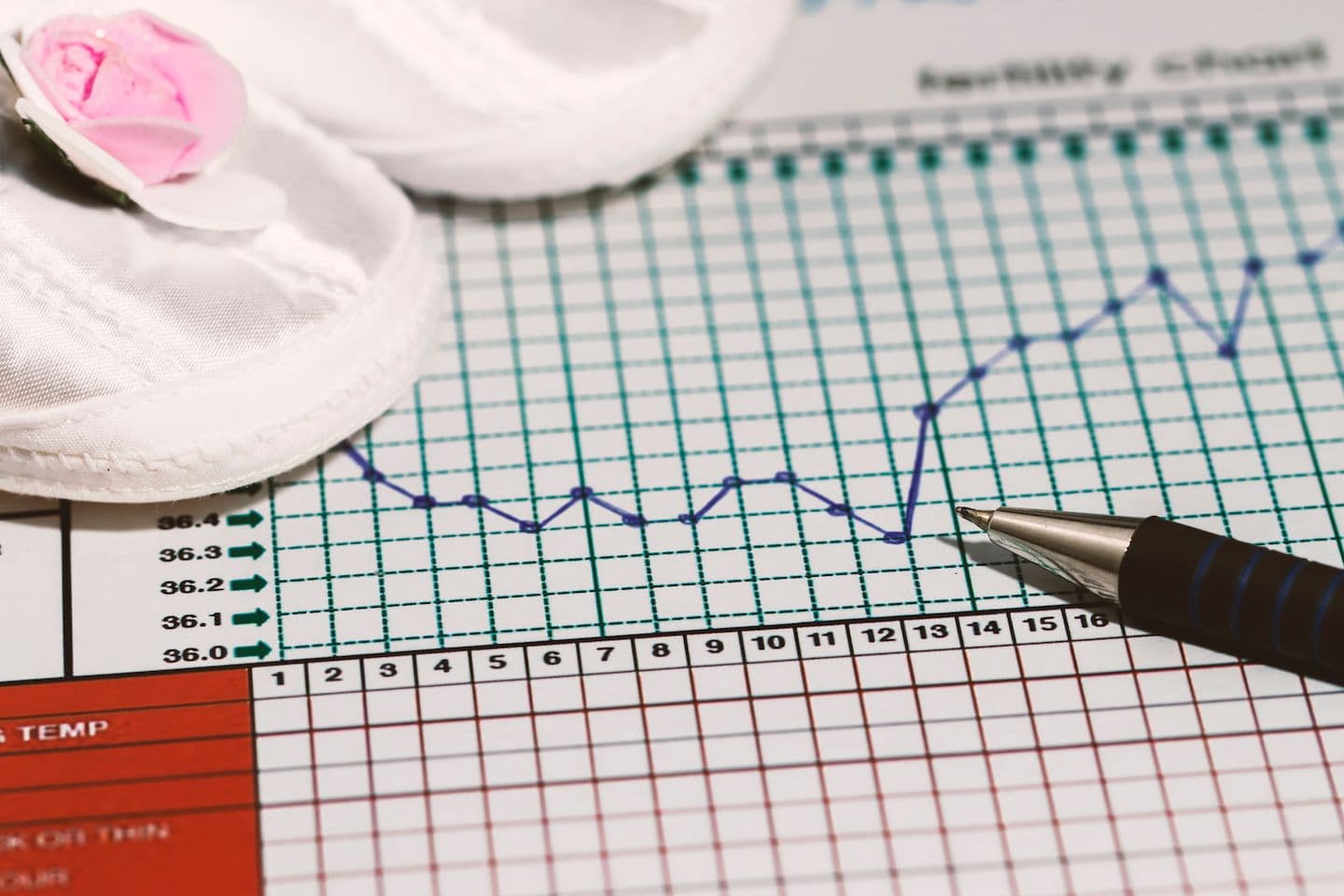How to Check Your Cervical Mucus
Fertility Awareness
Obie Editorial Team

Why it's important to check your cervical mucus
Cervical mucus regulates fertility and its physical properties change during the menstrual cycle. The cervical mucus is produced by the cervix and changes consistency throughout your menstrual cycle based on hormones associated with ovulation. Shortly after the menstrual period ends, the cervical mucus is dry and prevents sperm from penetrating the cervix but around the time of ovulation it becomes thin, has egg-white consistency, and is penetrable by sperm.
Cervical mucus (CM) is produced by glands in the cervix, the entrance to the uterus. It accepts, filters, prepares, and releases sperm for successful transport to the inside of the uterus, then, on to the fallopian tubes and the egg for fertilization.
If you want to get pregnant, checking your cervical mucus can help in determining when you are fertile. Here's how to do it:
Set up a fertility temperature chart
Fertility is something that needs to be watched closely and a fertility chart can help a great deal. The chart should consist of the date, your temperature, and a place to record the look of the cervical mucus. The abbreviations used to record the consistency of the mucus include S (sticky), C (creamy), We (wet), Wa (watery), and EW (egg white).
Wash your hands first
Before checking your mucus for fertility, it is important to wash your hands thoroughly. Obtaining a mucus sample requires an internal exam of sorts and clean hands will ensure no infection from any germs present on the hands.
Sit or squat comfortably
You will need to find a seat similar to the one you use to insert a tampon, or you can squat. The leg can be propped up to make the insertion of the finger into the vagina more comfortable.
Insert your finger
Once comfortable, reach one finger into the vagina. This finger will need to reach as far into the vagina as possible. The best source of mucus is the cervix which can be felt at the internal end of the vagina.
Inspect the mucus
Remove the finger from the vagina and examine the cervical mucus. The mucus will be categorized as sticky, wet, watery, creamy and egg white. Each of these categories has a specific meaning in regards to fertility.
Not much mucus
If there is no mucus on your finger or very little mucus, the body is not currently ovulating. Mucus production increases during ovulation.
Sticky mucus
If the mucus is sticky, this could mean you are not ovulating at this time. Mark the results on the chart and check again tomorrow.
Creamy mucus
Creamy mucus is a good thing. This is a good indicator that you are going to ovulate soon. Keep checking the cervical mucus every day for a change from creamy to watery and wet.
Wet mucus
Wet mucus is the first sign of ovulation. If you find that the mucus is wet, ovulation is happening and conception is more likely. Wet mucus will most often also appear watery and could appear similar to egg whites.
Watery mucus
As ovulation begins, mucus changes from sticky to watery. Along with the wet nature, the watery mucus means baby-making is a priority.
Egg white mucus EWCM
Bingo! EWCM is mucus which can be stretched an inch or more between your fingers. EWCM is the perfect fertile mucus which allows sperms to penetrate the cervix and helps fertilization. Egg white mucus that stretches between the fingertips when spread means the mucus is fertile! The longer the stretch holds between the fingers the more fertile the mucus.
Chart results
No matter the results, make sure to note them on the chart. After a few months, a pattern will more than likely show up on the chart making it easier to determine the time of ovulation each month. The chart can also help the woman with irregular ovulation patterns to predict fertility. It is important to keep careful records and use the results to plan intercourse.









